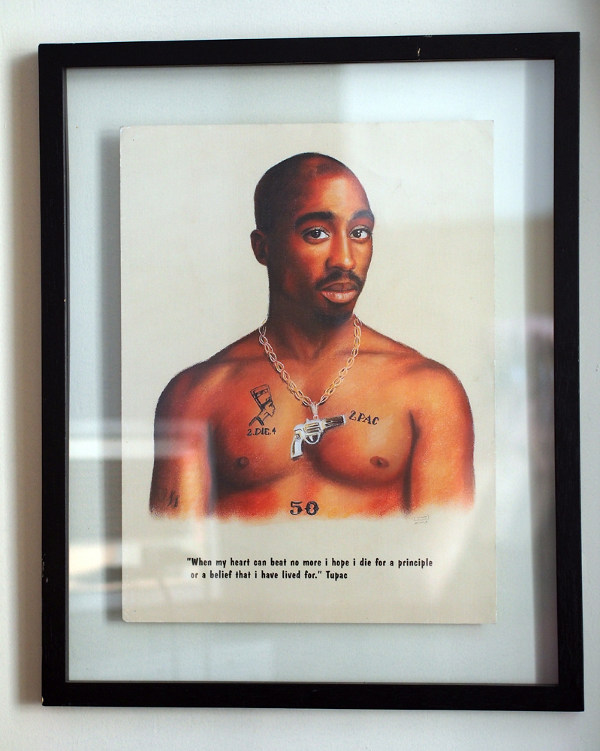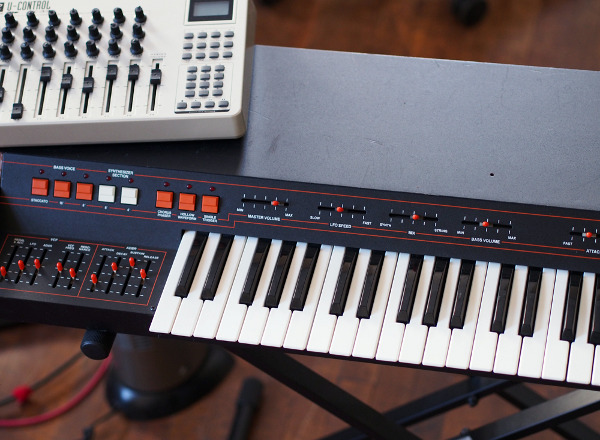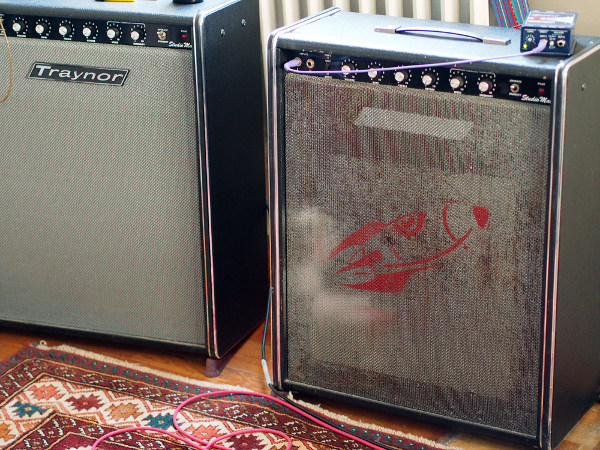- Ephemera of Tim Hecker
- Existing during the recording of Virgins
- (Kranky // Paper Bag Records)
- Montréal, QC
- ::web/sounds::
- [Photos: Tania Maria Elisa]
From the constant plasticity of Christina Bell:
Intricate electronic sound experimentation is the lifeblood of Tim Hecker’s ambient creations. His most recent release, Virgins, is an album composed with the refined musicality of an academic that also effectively taps into an aural world of static-drenched, emotionally charged, melodic noise. As a result of the involved process of treating and re-treating sound, the whole album steadily resonates with a majestic and eerie luminosity. Weird Canada met up with Hecker to explore some of the ways in which the physical world inherently shapes his final product.

I have this picture of Tupac over my speakers. When I’m doing a mix or something, I actually look at the speakers to zone in on the sound and when I look up, he’s always peripheral, just out of the plane of vision. His eyes are sort of floating too [Ed: Think the Mona Lisa], so it always encourages me to not step back [from what I’m doing], but push it because [the picture] makes me think “what would Tupac do?” I’m not making music like Tupac but there is a certain shared spirit.

This is a vintage string synthesizer that I used a lot on this record. It’s a synthesizer that specifically plays string sounds and I would treat it a lot. It’s a big aspect of some of the pieces. The synth has this kind of weird creepy presence to it. It’s a strange, very simple synthesizer that is relatively cheap compared to a lot of vintage things. It has a very limited purpose. It’s not that flexible, but I love it.

I use these a lot to move digital audio into a room and then re-record. I moved the more digital pieces I was working out through the amps and hit them pretty hard, then re-record them with microphones and bring [the sound] back in. It’s this constant plasticity of taking sound and pushing it, and pushing it, analog to digital, digital to analog until it starts to take a weird uncanny specialness that’s different than what you started out with. That’s my general way of working.
The tenants have changed in this building. The fact that next door became a casting couch at the end of my time here has led to an energy that affects how I work. You can hear the coming and going on the other side of the door and even though I tried to soundproof the room, it’s not soundproof at all. The energy bleeds through. It’s a give and take. I’ve received a lot of sonic energy. The presence of neighbours has an effect…
De la plasticité constante de Christina Bell: (Traduit par l’analogie audionumérique glauque de Julie Mayer)
L’expérimentation à base de sons électroniques complexes est le souffle des créations ambiantes de Tim Hecker. Composé avec la musicalité raffinée d’un académicien, son album le plus récent, Virgins, rejoint de manière efficace un monde auditif formé de musique bruitiste inondée d’électricité statique et chargée d’émotivité. Après un processus complexe de traitement et de retraitement sonore, l’album ne cesse de résonner d’une luminosité mystérieuse et majestueuse. Weird Canada a rencontré Hecker afin d’explorer en quoi le monde physique façonne l’essence de son produit fini.

J’ai cette photo de Tupac au-dessus de mes haut-parleurs. Quand je fais du mixage ou quelque chose du genre, je fixe attentivement les haut-parleurs pour contempler le son et quand je regarde vers le haut, il est toujours en périphérie, tout juste hors de mon champ de vision. De plus, ses yeux sont animés d’une sorte de mobilité [N. D. É. : pensez à la Joconde]; ça m’encourage à ne pas m’éloigner [de que je suis en train de faire], à aller plus loin parce que [la photo] me fait penser : « Qu’est-ce que Tupac ferait? » La musique que je fais n’est pas comme celle de Tupac, mais il y a une certaine ressemblance dans l’esprit.

J’ai pas mal utilisé ce synthétiseur de cordes vintage sur cet enregistrement. Il joue exclusivement des sons d’instruments à cordes auxquels j’ai fait subir de nombreux traitements. C’est un aspect majeur dans quelques-uns des morceaux. Le synthé y ajoute une sorte de présence louche qui fiche la trouille. C’est un synthétiseur étrange, très simple, relativement bon marché comparé à bien d’autres trucs d’époque. Il a très peu d’utilité. Il n’est pas si flexible, mais je l’aime.

Je les utilise souvent pour transférer de l’audio numérique dans un espace avant de le réenregistrer. J’envoie à travers les amplis les morceaux les plus numériques sur lesquels je planche, puis je les joue assez fort pour les enregistrer à nouveau avec des microphones et ramener [le son] dans le tout. C’est un mouvement de plasticité constante : prendre le son et le forcer encore et encore, de l’analogique au numérique, du numérique à l’analogique jusqu’à ce qu’il commence à prendre une tournure singulière et troublante, différente du son d’origine. Voilà comment je travaille en général.
Les locataires de ce bâtiment ont changé. Le fait que le local voisin soit devenu un studio de « promotion canapé » vers la fin de mon séjour a apporté une énergie qui affecte la manière dont je travaille. On peut entendre les va-et-vient de l’autre côté de la porte et même si j’ai essayé d’insonoriser la pièce, elle n’est pas insonorisée du tout. L’énergie passe au travers. C’est donnant, donnant. J’ai reçu beaucoup d’énergie sonore. La présence des voisins me fait un certain effet…